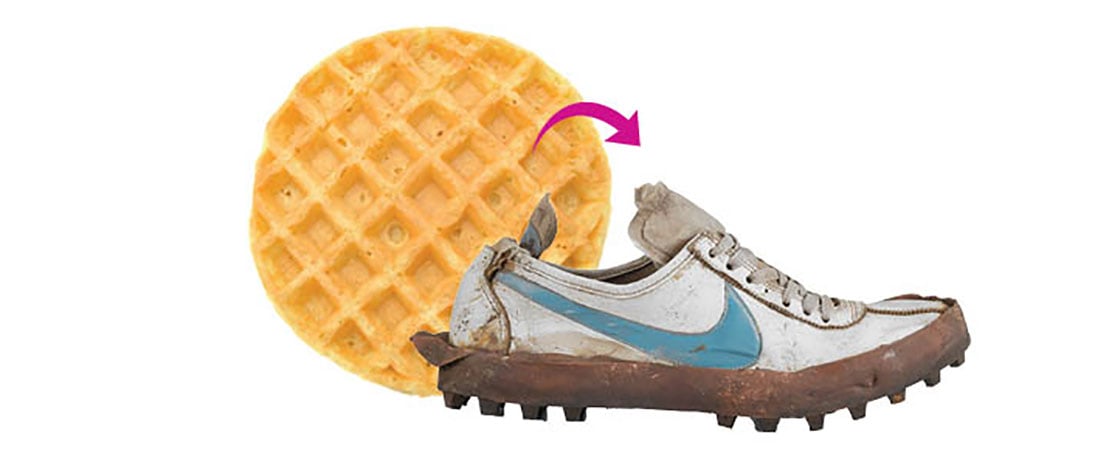It was a Sunday morning outside Eugene, Oregon, in 1971, and Bill Bowerman and his wife, Barbara, were making waffles. As they cooked, they chatted about a familiar topic: running shoes.
Bowerman was a track coach at the University of Oregon. For years, he’d been making shoes for the runners on his team, experimenting with different styles in his lab. He was good too—his handmade shoes had carried several runners to victory.
But now he had a problem. The running track at the university, like many tracks across the country, had been redesigned. Tracks that had been made of crushed cinder (kind of like chunky dirt) or volcanic ash were being replaced by ones made of rubber. At the time, track shoes had metal spikes on the bottom to give runners traction—but those spikes tore up the new tracks and slowed runners down. Bowerman knew the spikes needed to go, but he was stumped by what to replace them with.
Then, as Barbara pulled a hot waffle out of the waffle maker, something clicked in Bowerman’s brain. The pattern on the waffle maker was exactly what he had been looking for! The raised squares wouldn’t tear up the track, and they would keep a runner from slipping.
Bowerman snatched up the waffle maker, ran out of the kitchen, and hurried off to his lab. He concocted a mixture of chemicals and poured it into the waffle maker. He sensed that he was on to something big. But he did not know that he was about to change the sneaker industry forever.


